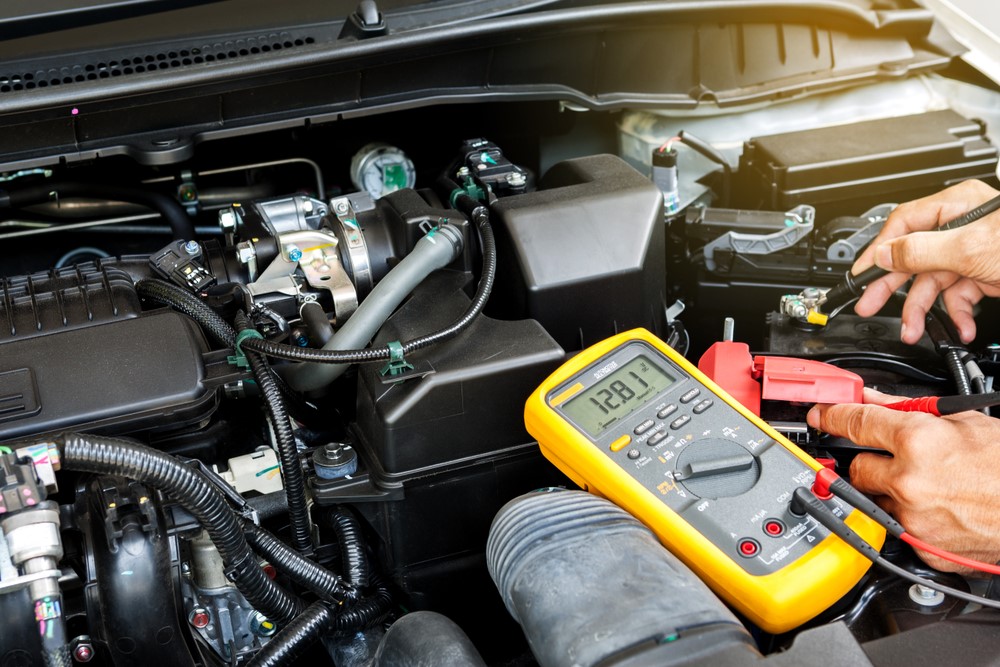So, how many volts is a car battery? The straightforward answer is: average car battery voltage is 12-volt DC batteries. But, the voltage is not a fixed number. In fact, there is a whole car battery voltage chart, and if you want to know about the overall condition of the battery, a voltage test seems to be the right option.
Regular testing of electrical systems and batteries is a part of automotive maintenance. Do it at least twice a year to decrease the chance of their sudden failure. A voltage test will help you determine the battery’s health.
Contents
How Many Volts Is A Car Battery? The Ideal Voltage
Before getting to know how many volts is a car battery, do you know what the voltage of a car battery is?
Battery is one of the most important components of a car, as it’s what powers the vehicle and all the electronics inside it. It provides the charge to fire up the engine, and without it, your car wouldn’t start at all. If the car has a low voltage battery, then the vehicle is not performing as well as it used to.
Measuring the voltage will give you an idea about the current charged status of a battery. Comparing it to the ideal car battery voltage range will help determine the battery’s condition.
A fully charged car battery voltage (without being plugged into an external device) ranges from 13.7 to 14.7 volts. It will drop to 12.4 volts when the charge is 75% and 12 volts when it is at 25%.

Read more:
- What Is Wrong When Fuel Gauge Gives Incorrect Readings?
- Should You Disconnect a Car Battery for Storage?
What is the normal car battery voltage when it runs out of juice? In that case, the voltage drops to 11.9 V. So, the voltage has to be at least 12 for a car battery to have the functioning capacity.
It’s important to note that car batteries are designed to operate within a specific voltage range, and the electrical systems of vehicles are built to accommodate this voltage. It’s not advisable to exceed or significantly deviate from these voltage levels, as it can damage electrical components or cause malfunctions in the vehicle’s systems.
How To Test A Car Battery Voltage
Using a voltmeter is the easiest way to measure a battery’s voltage at a given time. It is helpful because you can compare the readings with past results to deduce whether the battery is running fine.
Set the voltmeter to its maximum value and touch its positive and negative cables to the positive and negative terminals of the battery, respectively. If the device is functioning, it will show accurate readings.
Don’t have a voltmeter to test how many volts is a car battery? Well, you can still check the battery’s condition by kicking the engine off and turning on the headlights. It will not be possible to find out the voltage readings, though.
- Dim headlights signal drawing juice from the battery and no charge production from the alternator.
- Brighter lights when cranking up the engine imply the production of current by the alternator to some extent but not enough.
- Similar brightness during engine revving indicates a properly functioning battery and alternator.
Another way to check how many volts a car battery is using a multimeter. These devices are inexpensive and readily available. So before checking, you should let the car rest for a while. You can leave your car for a night or longer, then test it. It is better than just testing it after the engine has been running. Otherwise, the result may be not correct.
Firstly, set the DCV at 20. Then, touch the negative terminal of the battery with the black lead and the positive terminal with the red lead. So you will be able to see the battery voltage on the readout of the multimeter. The voltage must be around 12.4 – 12.6 volts. Anything less than this tells you that the battery is not fully charged.
An important thing to note is if you see a negative reading, this simply means you have got the leads the wrong way around and are touching positive to negative, negative to positive. What you need to do is just switch them around and touch them onto the opposite terminals.
Car Battery Load Test
A working battery will generate between 9.5 and 10.5 volts in 30 seconds in load testing. A reading in that range indicates a healthy battery that can store adequate power and run the electric devices in the car smoothly. You will need a battery load tester to perform the inspection.
What should you do if the battery fails the load test and the voltmeter readings come as less than 12 volts at regular intervals? You can try to jumpstart the car or increase its performance by adding distilled water. If it fails in both cases, you have to change the battery unit.

How Often Should You Test Your Battery?
So, besides the importance of knowing how many volts is a car battery, how to test car batteries. You should know how often to test the battery. As your car needs maintenance frequently, the battery needs to be checked too. As the specialists recommend, you should test the battery every 6 months.
If your car has a good battery and stable voltage, it is good news. But what if the battery has a problem? By testing evenly, you will know what to do when the voltage is low. If you leave your car for a long period such as the whole winter, you need to test the battery before bringing it out and starting using it.
Sum Up
So you got the answer to the question how many volts is a car battery? It is supposed to be 12 volts DC. Learning how to test your car battery so you can check the voltage of the battery when needed. Do not forget to follow our maintenance tips to better understand your car and know how to treat it.



